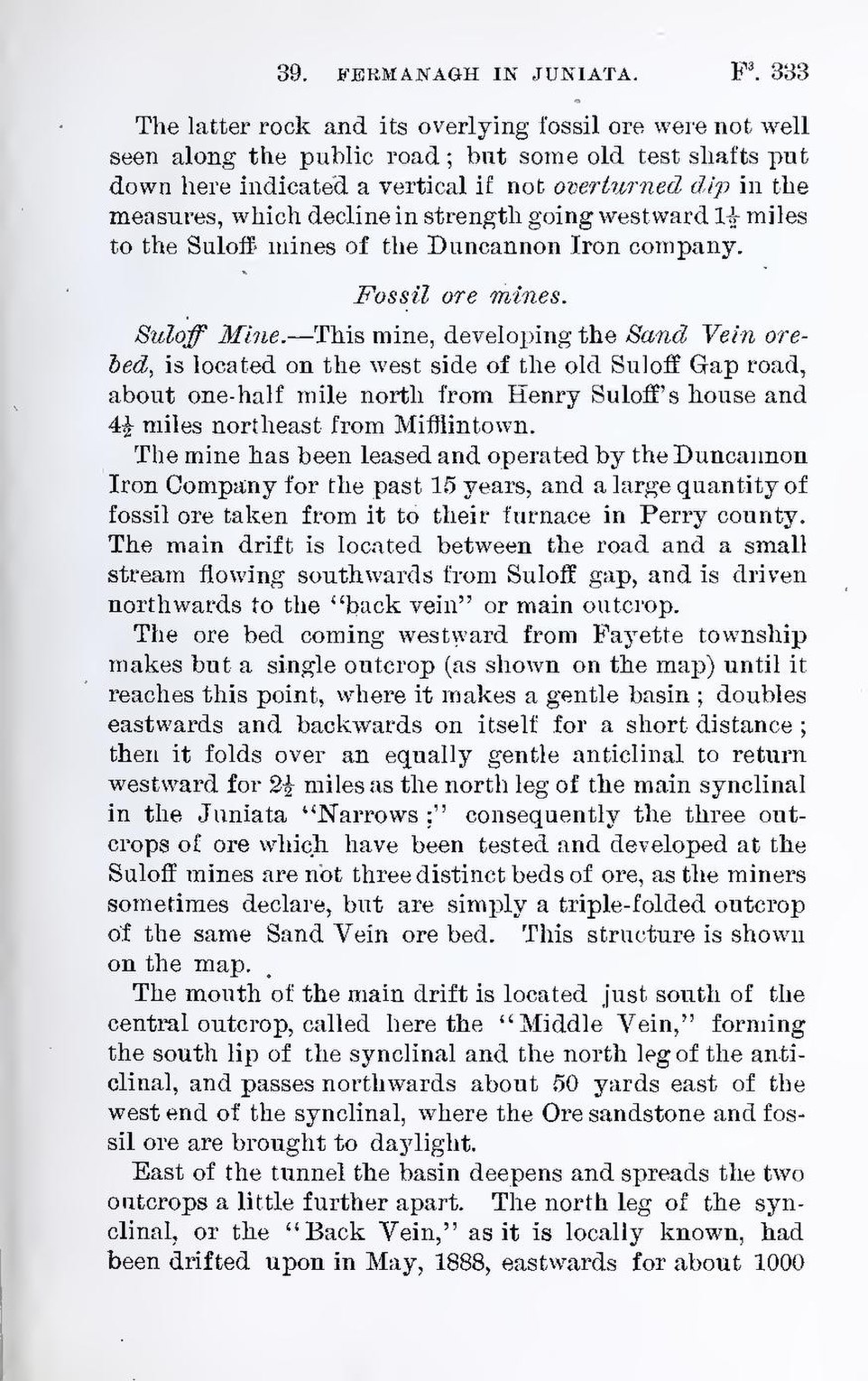The latter rock and its overlying fossil ore were not well seen along the public road; but some old test shafts put down here indicated a vertical if not overturned dip in the measures, which decline in strength going westward 1½ miles to the Suloff imines of the Duncannon Iron company.
Fossil ore mines.
Suloff Mine.—This mine, developing the Sand Vein ore-bed, is located on the west side of the old Suloff Gap road, about one-half mile north from Henry Suloff’s house and 4½ miles northeast from Mifflintown.
The mine has been leased and operated by the Duncannon Iron Company for the past 15 years, and a large quantity of fossil ore taken from it to their furnace in Perry county. The main drift is located between the road and a small stream flowing southwards from Suloff gap, and is driven northwards to the “back vein” or main outcrop.
The ore bed coming westward from Fayette township makes but a single outcrop (as shown on the map) until it reaches this point, where it makes a gentle basin; doubles eastwards and backwards on itself for a short distance; then it folds over an equally gentle anticlinal to return westward for 2½ miles as the north leg of the main synclinal in the Juniata “Narrows;” consequently the three outcrops of ore which have been tested and developed at the Suloff mines are not three distinct beds of ore, as the miners sometimes declare, but are simply a triple-folded outcrop of the same Sand Vein ore bed. This structure is shown on the map.
The mouth of the main drift is located just south of the central outcrop, called here the “Middle Vein,” forming the south lip of the synclinal and the north leg of the anticlinal, and passes northwards about 50 yards east of the west end of the synclinal, where the Ore sandstone and fossil ore are brought to daylight.
East of the tunnel the basin deepens and spreads the two outcrops a little further apart. The north leg of the synclinal, or the “Back Vein,” as it is locally known, had been drifted upon in May, 1888, eastwards for about 1000
